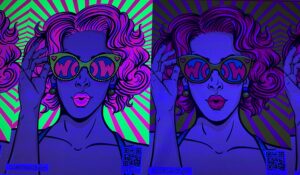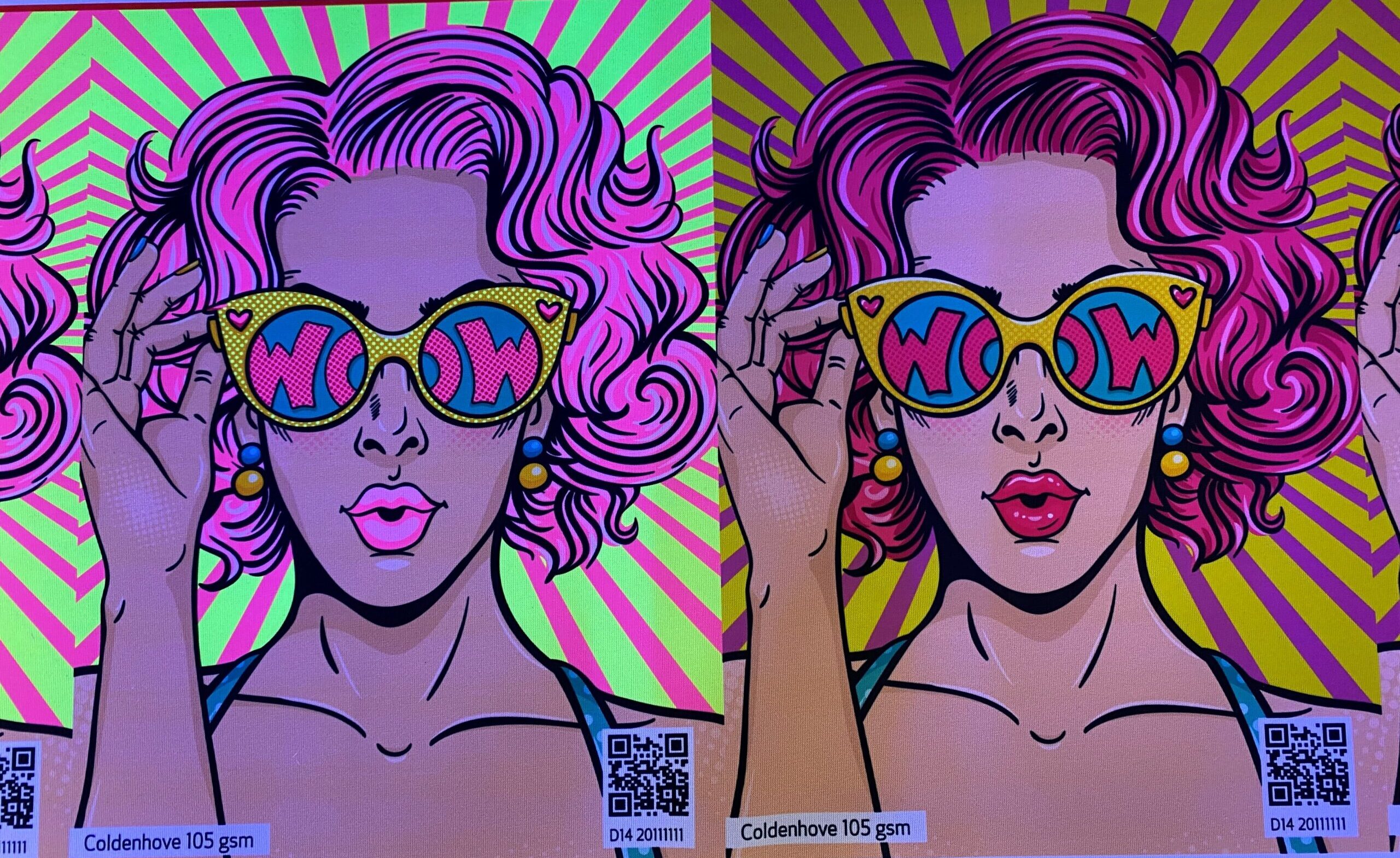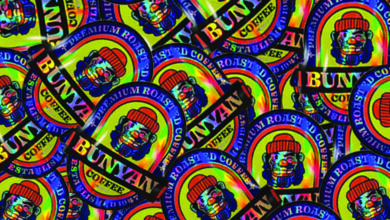Fluorescent dye-sublimation printing offers you new possibilities for printed graphics on T-shirts, sportswear, towels, wearables, and rigid polyester-coated materials. While traditional dye-sublimation printing works with the standard cyan, magenta, yellow, and black process colors, the addition of fluorescent pink and yellow inks makes it possible to achieve brilliant fluorescent print results. Printing fluorescent pink and yellow in combination with the process colors makes it possible to produce other fluorescent colors.
Fluorescent dye-sublimation printing is typically done with the paper transfer process, although some production shops utilize the inks with direct-to-fabric printing for specialty print applications. As with standard dye-sublimation transfer printing, print your graphic with dye-sublimation inks onto transfer paper designed to achieve optimal transfer of the dye onto polyester fabric or rigid materials. Next, place the transfer paper in contact with the fabric or rigid material. For flatbed heat presses, cut the transfer paper to size and lay the paper onto a piece of fabric. For higher volume production, utilize a rotary heat press — which works with rolls of printed transfer paper rather than individually cut sheets.
With the transfer paper in contact with the printed fabric, the heat press applies heat and pressure to start the transfer process for 40-60 seconds with fabric materials and 90 seconds or longer for rigid products. After pressing, remove the transfer paper from the printed product and the resulting graphic is both water and rub resistant on the printed material and ready for finishing or sale.

Applications for fluorescent inks
In soft signage, you might see fluorescent inks incorporated into front-lit signage, backlit displays, tension banners, SEG applications, and hanging banners, but predominantly in flag applications for both indoor and short-term outdoor applications.
In terms of apparel, the most obvious — and most common — way to use fluorescent inks is in sportswear and performance sports apparel. However, you can also add fluorescent graphics to fashion and specialty apparel applications such as socks and hats.
You will also find fluorescent dye-sublimation printing with personalized items such as beach towels, blankets, mugs, and pillows. In photo gifting products, fluorescent accents can spruce up images with a sunset or landscape scene.
File handling considerations
Proper file preparation is the most critical step to achieving the best color effects with fluorescent inks.
What’s needed from your customers to produce a fluorescent product? One option is for them to give you their files like they normally do — maybe you have an apparel template, teardrop flag template, or some other soft signage template. You can then manipulate the customer file to selectively replace process color regions with a fluorescent color channel in your design software. Keep in mind that you can mix process colors with fluorescent colors in the image, but the brightest results will be achieved when replacing mostly pure magenta, yellow, and red image regions with fluorescent inks
We recommend vector (PDF, EPS, SVG, Illustrator, or CorelDraw) artwork because it’s much faster and easier to edit the fluorescent print layers from a production standpoint. As far as raster artwork, it takes a little more effort, but you can achieve the desired fluorescent result if the image has areas that can easily be masked out for the fluorescent ink channels. Be cautious with flattening files as this can unintentionally remove the fluorescent colors with unexpected results.
If you’re looking for ways to expand your dye-sublimation business, fluorescent dye-sublimation printing can add a bold impact to your customer’s graphic print designs.





